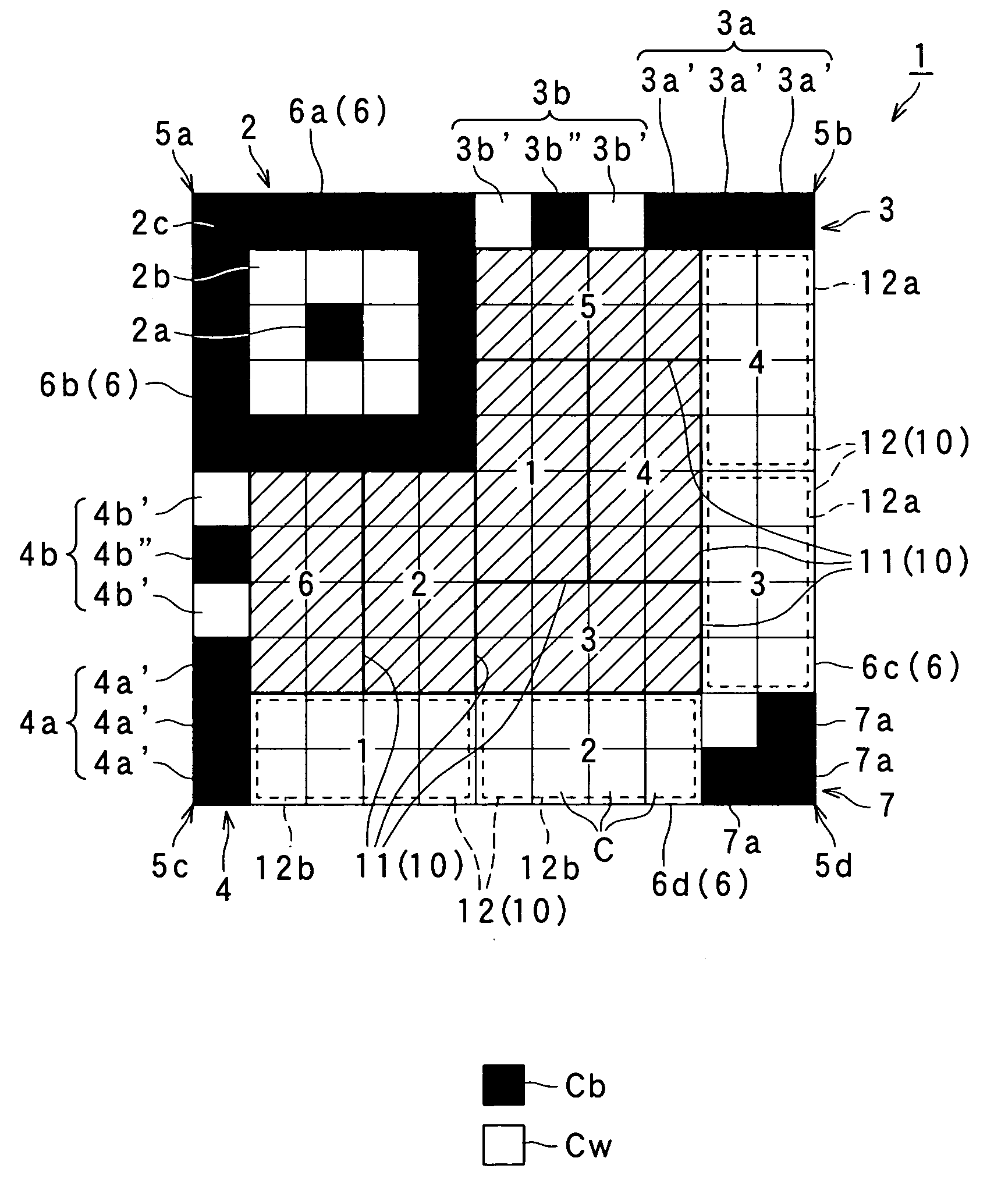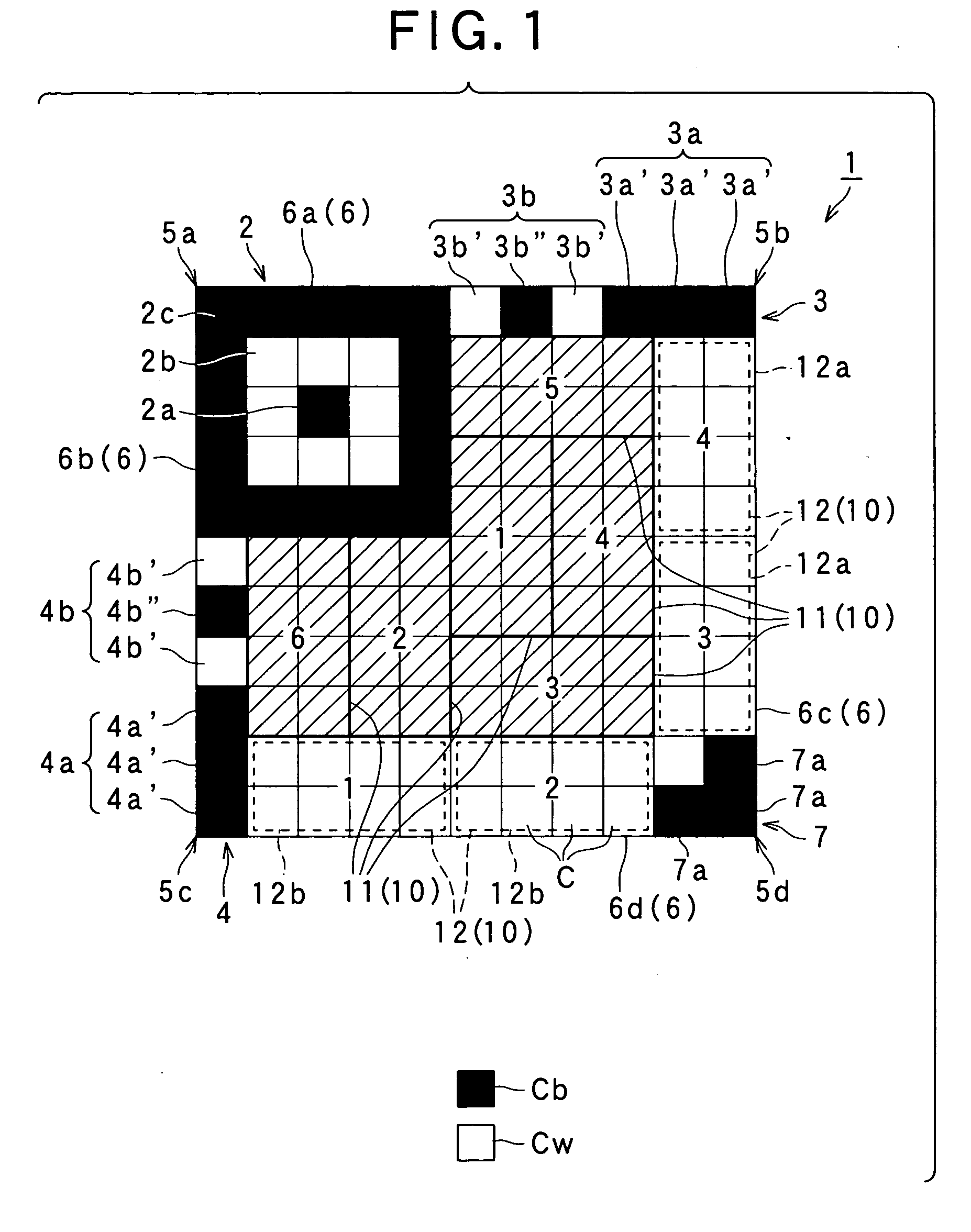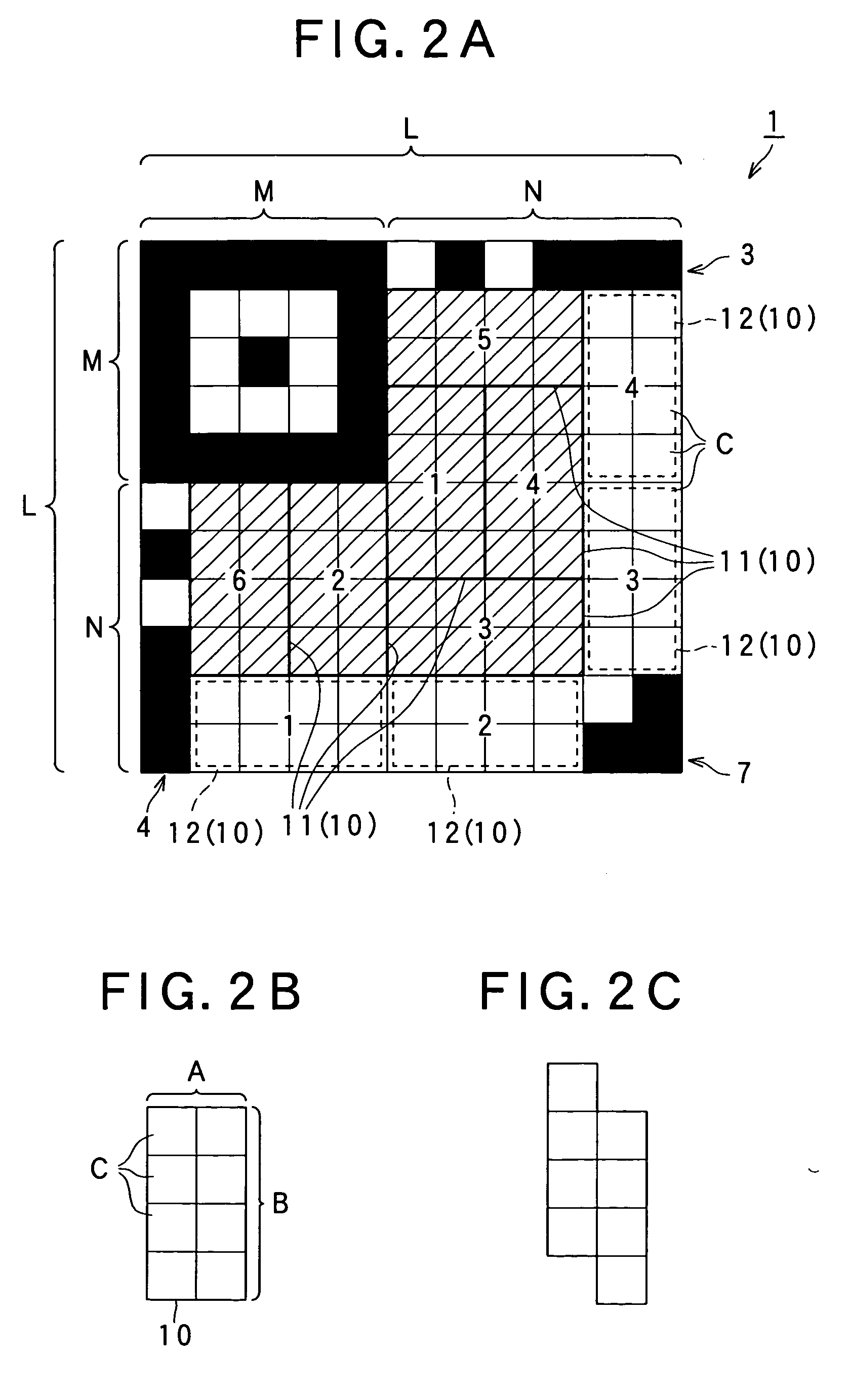Two-dimensional code having rectangular region provided with specific patterns for specify cell positions and distinction from background
a two-dimensional code and rectangular region technology, applied in the field of two-dimensional codes, can solve problems such as large number of cells, and achieve the effect of increasing the number of cells
- Summary
- Abstract
- Description
- Claims
- Application Information
AI Technical Summary
Benefits of technology
Problems solved by technology
Method used
Image
Examples
third embodiment
[0171]Hereinafter is described a third embodiment. FIG. 6 is a schematic explanatory view illustrating a 2D code 130, according to the third embodiment. FIG. 6 also omits a specific cell structure of each code block 10.
[0172]The third embodiment is different from the first embodiment in that each of second specific patterns 133, 134 has a structure different from that in the first embodiment, and that multi-color cells are used. Other portions of the configuration of the present embodiment are identical with those in the first embodiment. Accordingly, the following description will be mainly focused on the differences, and explanation will be omitted as to the identical portions of the configuration. In the example shown in FIG. 6, the configurations of the first specific pattern 2, the end pattern 7, the first borders 6a, 6b, and the second borders 6c , 6d are identical with those in the first embodiment. Also, the plurality of data code blocks 11 and the plurality of the error-cor...
fourth embodiment
[0183]Hereinafter will be described a fourth embodiment. FIG. 7 is a schematic explanatory view illustrating a 2D code 140, according to the fourth embodiment. FIG. 7 shows, by broken lines, the positions of error-correction code blocks 12, and also shows, by solid lines with hatching, the positions of the data code blocks 11. FIG. 7 omits a specific cell structure of each code block 10.
[0184]Similar to the first embodiment, the 2D code 140 of the present embodiment has a plurality of cells “C” (the reference symbol “C” is designated to only a portion of the cells in FIG. 7 and designation of the reference symbol to other cells is omitted) arranged in matrix. The 2D code 140 includes a plurality of code blocks 10, the first specific pattern 2 (having the same structure and functions as in the first embodiment), and second specific patterns 143, 144. The 2D code 140 of the present embodiment is configured to have a shape with square outline in which a plurality of cells “C” are arran...
fifth embodiment
[0216]Hereinafter will be described a fifth embodiment. FIG. 10 is a schematic explanatory view illustrating a 2D code 150, according to the fifth embodiment. FIG. 10 also shows, by broken lines, the positions of error-correction code blocks 12, and also shows, by solid lines with hatching, the positions of the data code blocks 11. FIG. 10 also omits a specific cell structure of each code block 10.
[0217]As shown in FIG. 10, the fifth embodiment is different from the first embodiment (shown in FIG. 1) in that the second specific patterns 3, 4 have been changed to second specific patterns 153, 154, and that blank cells (the cells between the first specific pattern 2 and the second specific pattern 153, and the cells between the first specific pattern 2 and the second specific pattern 154) are ensured to be used for other purposes. Other portions of the 2D code 150 are configured in the same manner as in the first embodiment. Accordingly, the following description will be focused on th...
PUM
 Login to View More
Login to View More Abstract
Description
Claims
Application Information
 Login to View More
Login to View More - R&D
- Intellectual Property
- Life Sciences
- Materials
- Tech Scout
- Unparalleled Data Quality
- Higher Quality Content
- 60% Fewer Hallucinations
Browse by: Latest US Patents, China's latest patents, Technical Efficacy Thesaurus, Application Domain, Technology Topic, Popular Technical Reports.
© 2025 PatSnap. All rights reserved.Legal|Privacy policy|Modern Slavery Act Transparency Statement|Sitemap|About US| Contact US: help@patsnap.com



